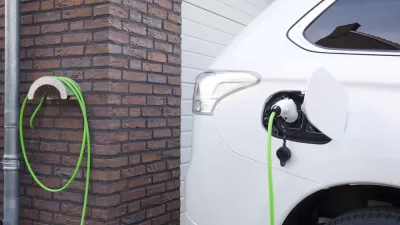As California continues to set a national example for greenhouse-gas emission reductions while meeting the goals of AB 32, the state must grapple with new regulatory issues around energy.
The California Public Utilities Commission is one of the bodies charged with finding answers to these complex questions. CPUC Commissioner Carla Peterman, an authority on energy policy in the state who previously served on the California Energy Commission, speaks to electric-vehicle and energy-storage regulation. She offers an optimistic outlook on both of these topics, taking into account market responses to CPUC initiatives:
"We as a state, through the CPUC, adopted first-in-the-nation targets for energy storage—1.325 gigawatts by 2020 last fall. When we first set out the proposal, there were questions about whether it would be possible and whether there would be market interest. We’ve seen tremendous interest already. We’re in the process of working through the utility applications for the first solicitations this fall. Southern California Edison, as an example, has already done a solicitation for 50 megawatts of energy storage, on the commission’s orders. They had over 500 bids, which is a lot of industry response."
She goes on to discuss ZEVs: "We’ll have at least 100,000 electric vehicles by September in California. We’re in the nineties now. That will be an exciting marker. Watching the sales trends is my favorite part. Compared to last year, are sales increasing continuously? We’re seeing that. In 2015, a number of automakers are planning to have a next-generation version of their cars. Going forward, I think we’ll be seeing more models and more choice for customers."
FULL STORY: Carla Peterman on CPUC’s Evolving Energy Regulations

Planetizen Federal Action Tracker
A weekly monitor of how Trump’s orders and actions are impacting planners and planning in America.

Restaurant Patios Were a Pandemic Win — Why Were They so Hard to Keep?
Social distancing requirements and changes in travel patterns prompted cities to pilot new uses for street and sidewalk space. Then it got complicated.

Maui's Vacation Rental Debate Turns Ugly
Verbal attacks, misinformation campaigns and fistfights plague a high-stakes debate to convert thousands of vacation rentals into long-term housing.

In California Battle of Housing vs. Environment, Housing Just Won
A new state law significantly limits the power of CEQA, an environmental review law that served as a powerful tool for blocking new development.

Boulder Eliminates Parking Minimums Citywide
Officials estimate the cost of building a single underground parking space at up to $100,000.

Orange County, Florida Adopts Largest US “Sprawl Repair” Code
The ‘Orange Code’ seeks to rectify decades of sprawl-inducing, car-oriented development.
Urban Design for Planners 1: Software Tools
This six-course series explores essential urban design concepts using open source software and equips planners with the tools they need to participate fully in the urban design process.
Planning for Universal Design
Learn the tools for implementing Universal Design in planning regulations.
Heyer Gruel & Associates PA
JM Goldson LLC
Custer County Colorado
City of Camden Redevelopment Agency
City of Astoria
Transportation Research & Education Center (TREC) at Portland State University
Camden Redevelopment Agency
City of Claremont
Municipality of Princeton (NJ)




























